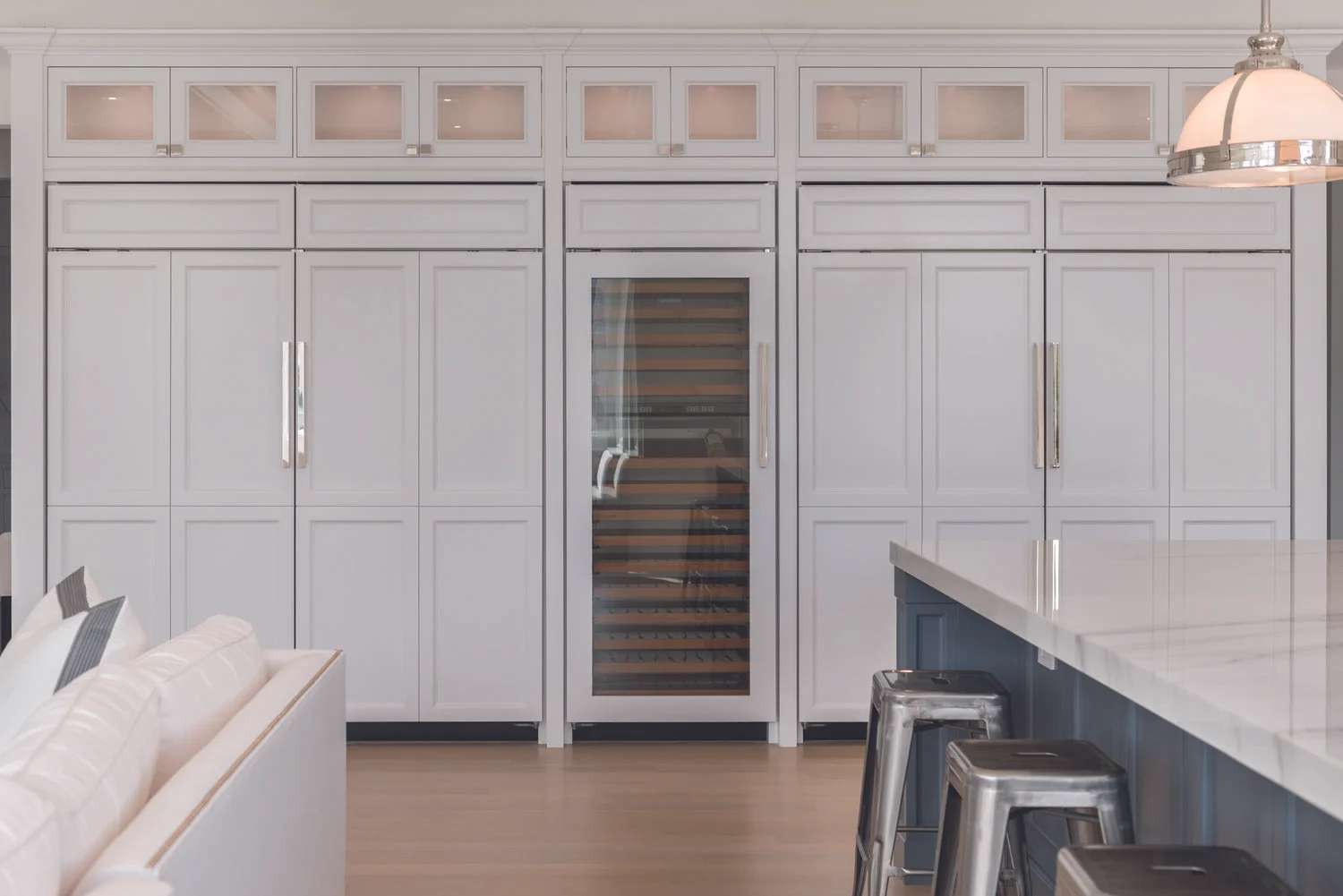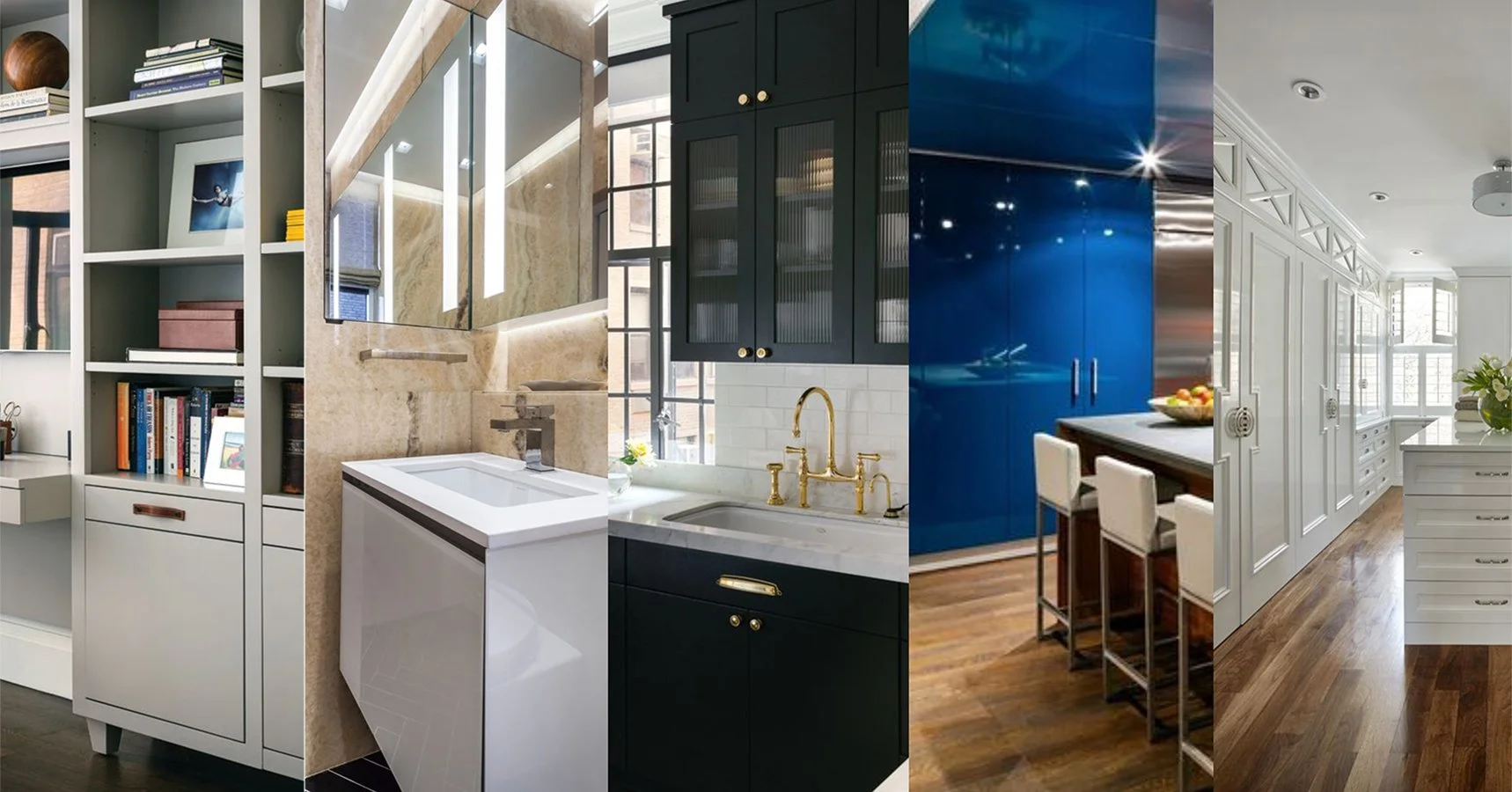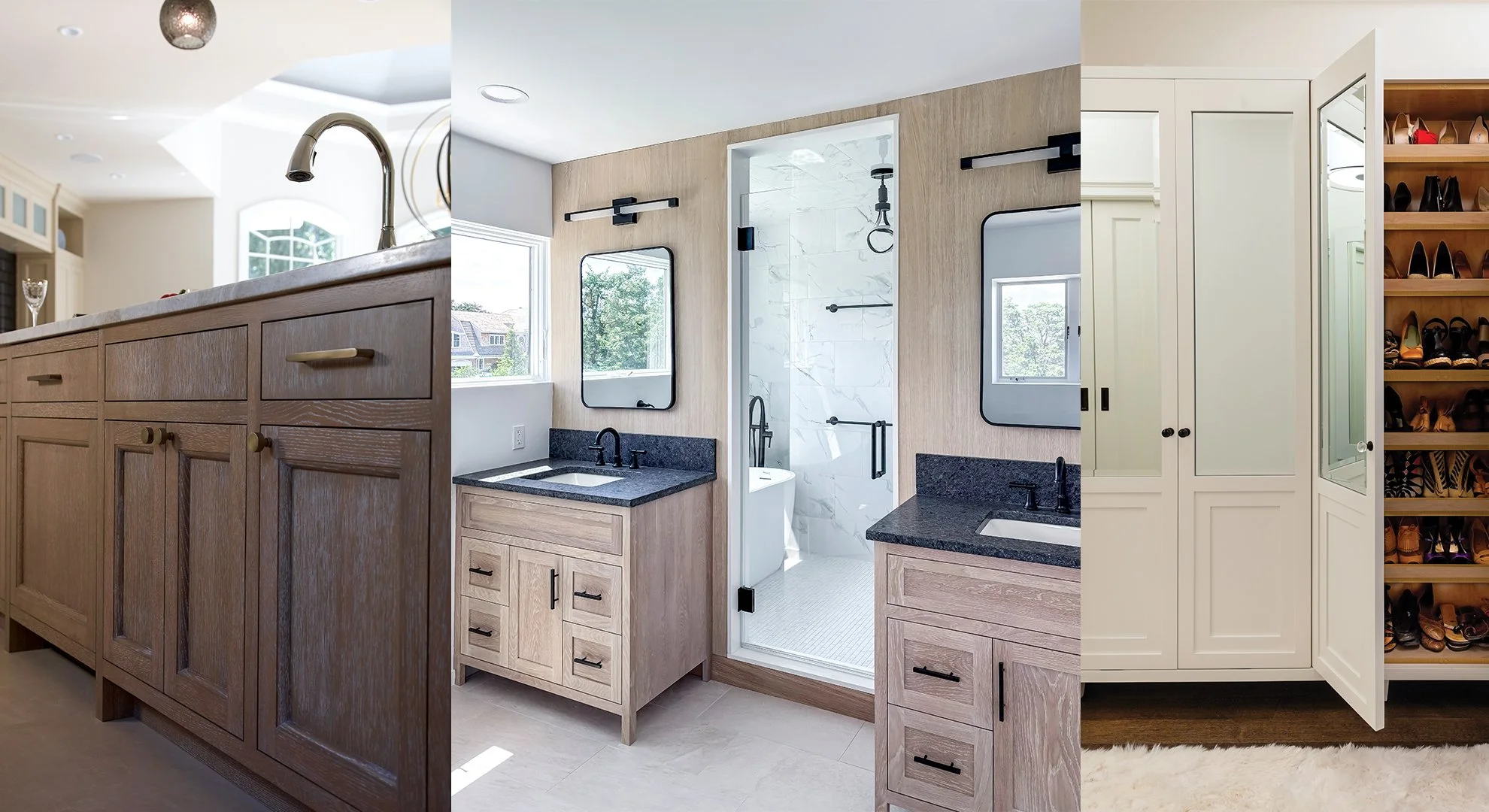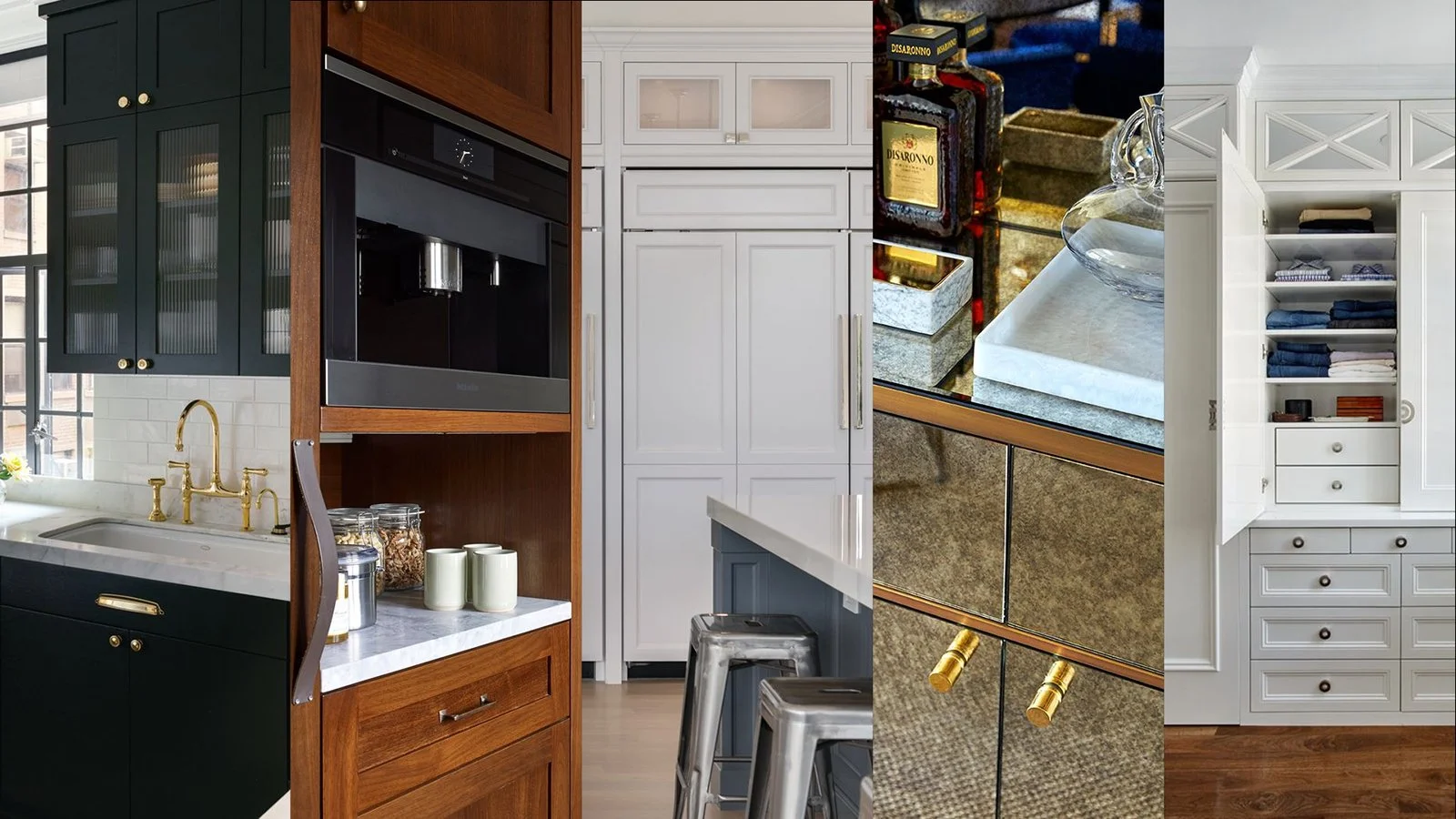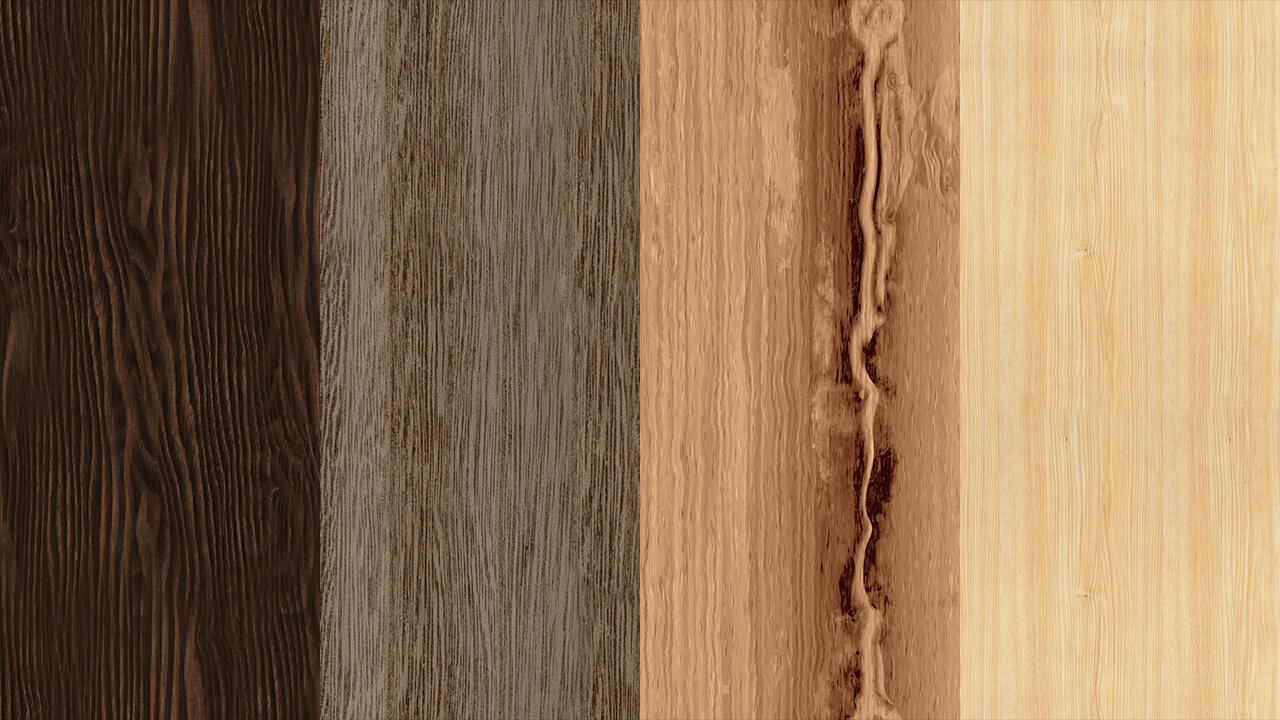If you look around your home, you’ll see many different kinds of woodwork all around you. You have wood posts, studs in your drywall, doors, trims, and maybe even some exposed wood ceiling beams. In the image above, there’s a wide variety of wood pieces such as the fireplace surround, wall paneling, faux beams, and built-in shelving. Have you ever wondered what kind of woodwork these are?
In this article, we’ll explore the more decorative wood pieces you may find in your home. Pieces such as trims, baseboards, doors, wainscotting, and the like all fall under the same category –millwork.
What is Millwork?
Millwork is woodwork that is manufactured at a mill. These can be found in almost every corner of many homes. Millwork includes items such as baseboards, crown moldings, wood doors, stair treads, and many more. The primary material used can be any type of wood material such as raw lumber, softwoods, hardwoods, and even fiberboards. Some millwork products also incorporate non-wood materials such as steel, aluminum, or glass. The most common example of this would be doors and windows.
You can also call these products architectural millwork or architectural woodwork. This is because millwork is almost always built into, attached, or otherwise made specifically for the building’s architecture –both interior and exterior. Because it must conform to a specific structure, millwork is always custom-made.
However, not all products custom-made at a sawmill are considered as millwork. Structural elements such as posts and beams are not counted as millwork. Same deal with wood flooring, ceilings, and sidings.
In summary, the following characteristics define if a piece of woodwork is millwork:
Produced in a saw mill.
Custom-made to fit and built into an existing space.
Not a structural piece.
Millwork vs. Casework - What’s the difference?
Understandably, some people may use the terms millwork and casework interchangeably. While they may seem similar at first glance, they are definitely not the same.
Even if it’s made in a sawmill, casework is distinct from millwork. Casework refers to pre-made, typically mass produced, box-shaped woodwork or cabinetry. Think of the stock cabinets, bookcases, and chests of drawers at your local WayFair or IKEA. Even semi-stock options where you can mix-and-match pieces from a catalog is considered casework –more specifically, it is modular casework.
Casework pieces come in standard dimensions, limited finish options, and in a set style. Many of its components are prefabricated on an assembly line using a common template. This allows companies to produce multiples of the exact same product, which helps bring down manufacturing costs.
Custom lacquer finish kitchen cabinets by Wood & Co.
Are Custom Cabinets Millwork?
Custom cabinets are considered millwork because they’re made specifically for the space it will inhabit. For example, kitchen cabinets, walk-in closets, and bathroom vanities are all integrated into the existing architecture. They’re made to the exact dimensions bounded by the walls, floors, and ceilings. This lets you fully utilize a space to suit your needs. This level of customization is what sets it apart from regular standardized casework.
Note that custom free-standing cabinets are not considered millwork. If it can be easily moved around and not affixed into the structure, then it counts as furniture.
Millwork in Your Home
While it’s good to know what is and isn’t considered millwork, what’s likely more important for many homeowners is the why and how of it all. Why should I think about the millwork in my home? Why is millwork important? How can I use millwork in my home?
Millwork Unifies Your Spaces
Millwork establishes a consistent style in your space. Using trims, or even the absence of them, serves to create a certain look in your home. Let’s take crown moldings as an example. Imagine them sweeping across the ceilings in all your rooms –from your living room, to your kitchen, to your bedrooms. If even just one of these spaces had a different style of crown molding or none at all, then the contrast would feel unnerving and jarring. Apply that same concept with other millwork such as baseboards and door trims.
By having a consistent design and detail language throughout your home, you can unify the various individual spaces within. Even as rooms are divided by walls, it will all feel cohesive with proper application of millwork.
Millwork Expresses Your Personality
It’s not just in furniture and decor choices where you can express individuality in your home. Even the built-in details, the millwork, echoes your personality. It is custom-made for you after all. Even if you’re working with an interior designer or architect, it is still your tastes, interests, and requirements that guide their designs. It is you who decides whether you want ornate and traditional trims versus a sleek and minimalist equivalent.
Millwork as a Focal Point
We mention trims and moldings a lot, but that’s just because it’s the most common type of millwork people use. But remember that you’re not limited to just that. Millwork also includes built-in cabinetry, fireplace mantels, and the like. When used strategically, millwork can serve as focal points in a living space, adding a wow factor to your home.
For example, a kitchen can have accent pieces amongst all the other cabinetry. You can have a custom-made wood range hood to complement an imposing range oven. You can also have a central kitchen island with more ornate detailing and a contrasting finish.
On the other hand, a living room can have a floor-to-ceiling fireplace surround, adding life to an otherwise plain wall. You could also opt for a fully decked out entertainment wall housing a large TV and surrounded by decor.
It is these kinds of bespoke features that truly sets your home apart from others.
Considerations When Choosing Millwork
Of course, adding custom millwork into their home is the default for everyone. One can also mix and match between millwork, casework, and furniture. There are different factors at play.
The primary consideration for most is the cost. Because millwork is tailor-made to your space, it’s made-to-order. It’s not mass produced. This means that millwork is almost always more expensive than ready-made options.
What you get in exchange, however, is the guarantee that everything just fits. You won’t have to worry about small leftover unused spaces. This is especially helpful if you have any awkward angles and curved walls in your home.
When considering custom millwork, whether it’s cabinetry, trims, paneling, and the like, it’s best to work with a professional. Wood & Co. specializes in handcrafted luxury interiors and custom cabinetry. For all your woodworking needs, we’d love to help. Wood is in our name after all. Get in touch with us and let’s add a touch of uniqueness and personality to your home with some custom millwork.



